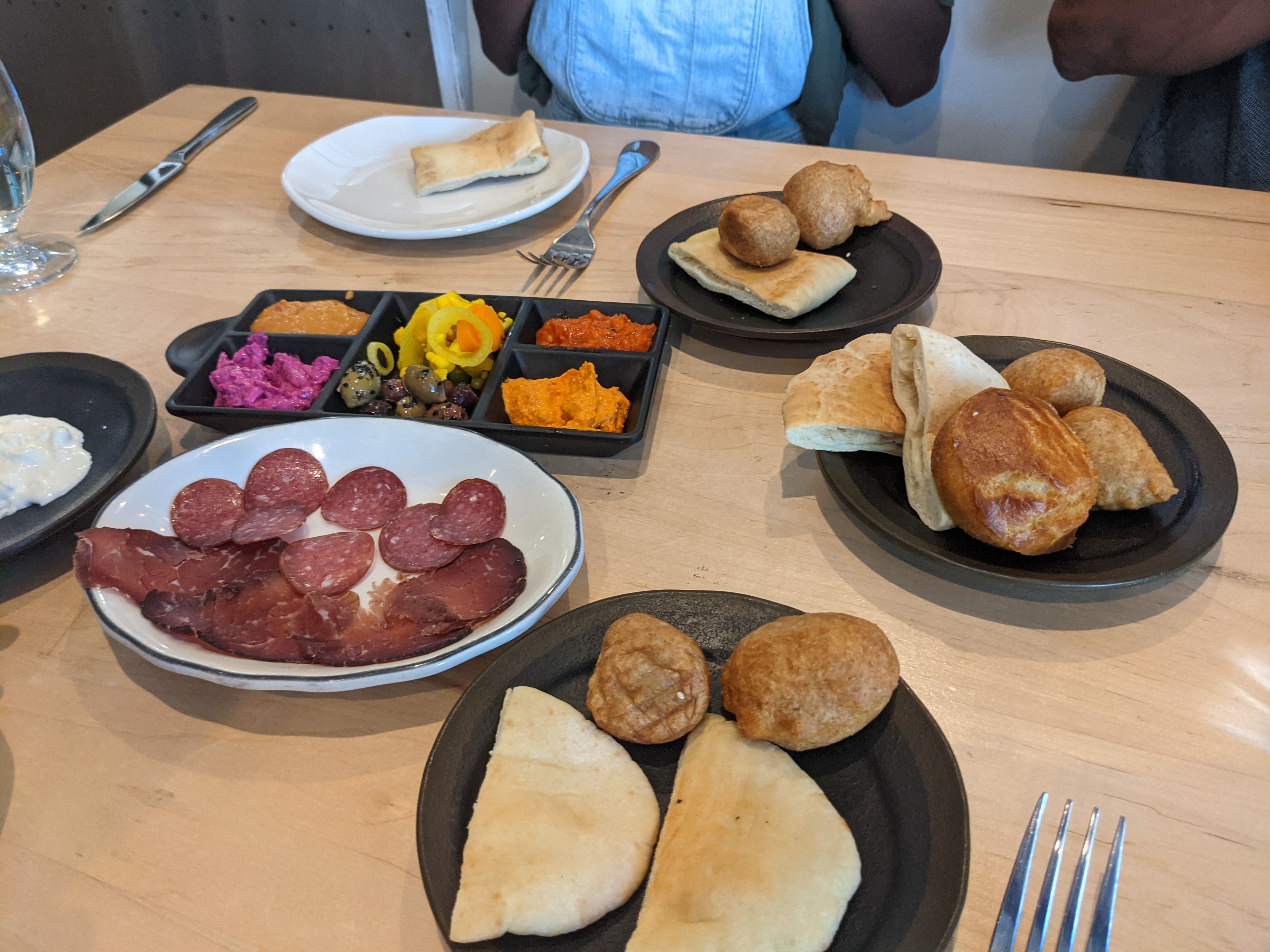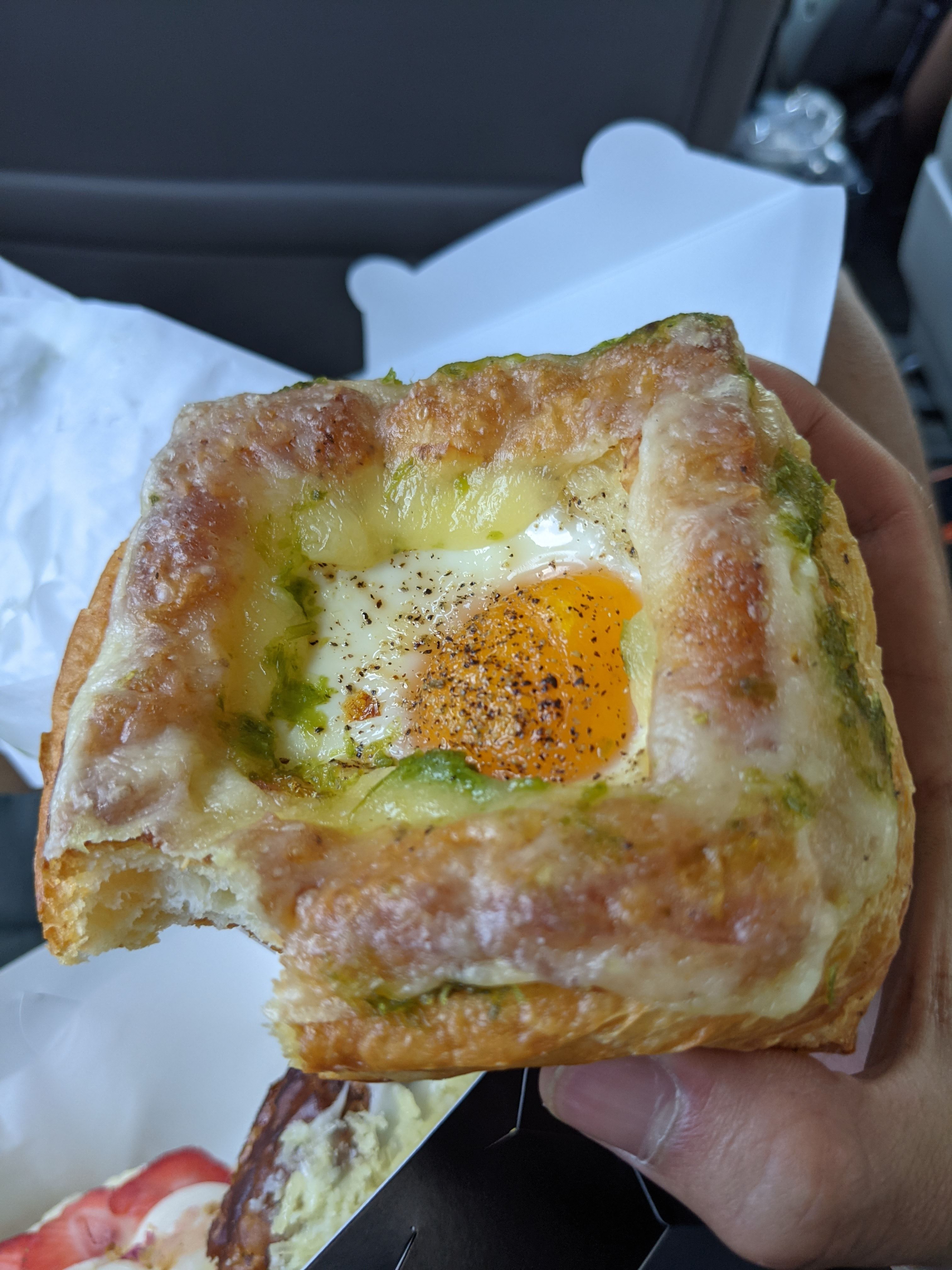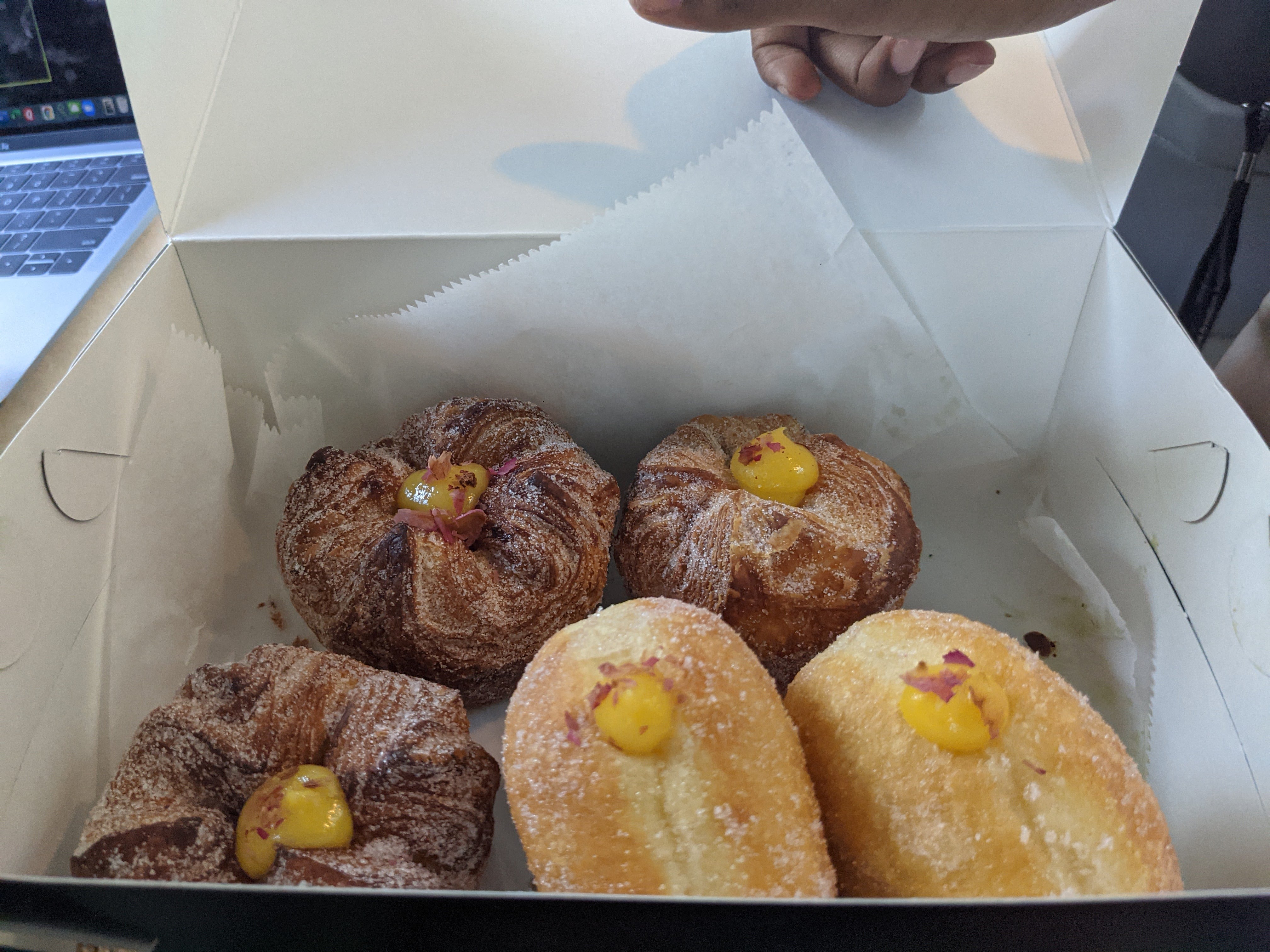
Welcome back friends! It's been a little while, but I'm happy to be back and talking about food again. Last week, I visited Washington DC to see some friends who live in the area, which of course involves sampling the local culinary scene. This post will be more food review-esque, as a result. But before that, a return to Ethiopian food.
I stayed with one of my friends who is Ethiopian and has made a brief appearance on both iterations of this food blog. Her mom is one of the best cooks I know, especially with regards to classic Ethiopian dishes (see an earlier post for some context) While I visited, I got to try the famous dish doro wot, which is essentially a spiced chicken stew. Per tradition, doro wot requires a long, slow process of caramelizing and reducing onions with spices to create a rich, complex sauce. As a result, people often make large quantities at a given time (frequently for special occasions) and eat it over many meals. I also learned that eating the chicken also involves chewing on the bones to extract the marrow, which was quite surprising to me—even though I personally love the fatty, gelatinous texture and mineral flavor of marrow, my mom growing up used to discourage us from eating chicken bones since she was afraid of us cutting our mouths with the shards. In this case, however, the chicken had been cooked sufficiently to soften the bones, yielding a rather pleasant texture while the flavor of the spices had slightly penetrated the surface to flavor them.
Another enlightening experience was tasting some of the hard-to-access spices and herbs which are present in Ethiopian cooking. I discussed some of these in my first post on Ethiopian food, including korarima (Ethiopian cardamom) and koseret. Korarima is closely related to the green cardamom people in the US would be more familiar with, but possesses a strikingly mentholated aroma (like Vick's Vapo-rub). My friend's mom gave me some freshly ground koramima to smell, and I was struck by how intense and terpene-focused the aroma was. Apparently, the major component of the essential oil is the same compound which gives eucalyptus its distinctive aroma, which explains my assocation with menthol. I was also able to smell some koseret, which reminds me strongly of mint and oregano and Wikipedia describes as "camphorous" (a great aroma descriptor, by the way). Finally, in the garden there was a rue plant (called Tena Adam in Ethiopia) which lends an herbal note to tea, including a classic Ethiopian version made of thyme (tosign). Rue is actually used across Europe, though I've never seen it appear in American cooking, and its aroma lies somewhere between vaguely minty and herbally bitter.
I also ate several other dishes which I've discussed before (tibs, misir wot, injera), so I won't talk about them here for the sake of brevity, but overall I was again very happy to expand my knowledge and palate for Ethiopian cuisine. Personally speaking, I find exploring an unfamiliar cuisine one of the most exciting cultural experiences—it's not often that food can be at once challenging, delicious, and intellectually stimulating. That is certainly true of my experience with Ethiopian cuisine, and I hope that it will be true for other yet unexplored cuisines.
While I was in DC, I tried wide variety places thanks to my wonderful hosts, including Georgian, Szechuan, and Balkan restaurants, as well as one of the most impressive bakeries I've been. The Georgian restaurant was exciting for me, since I've always seen pictures of the iconic cheese and egg bread, khachapuri, but never have had the chance to try it. As one of the most culturally important dishes in Georgia, I feel like the range of varieties reflects the wide culinary influences on Georgian food. In fact, the egg and cheese version (known as Adjarian Lazi) is only one of many disparate khachapuri containing seasoned meats, smashed red beans, potatoes, vegetables, and other ingredients. The egg and cheese was extremely rich, perhaps almost overly so, but one can never really go wrong with cheese and fresh bread. We also ordered a pork mtsvadi, which I think is just the country's version of a kebab, as well as khinkali, which are soup dumplings (!) traditionally eaten with the fingers. The grilled pork was a standout, with a smoky charred exterior with remarkably tender texture. I was extremely confused by the khinkali, which look almost identical to the Shanghainese variety, but have a thicker wrapping and a filling which is spiced with parsley (I think). Apparently, they were brought from China by the Mongols, an honestly incredible confluence of history and food.

The Szechuan place was very elegantly decorated, with a rather swanky vibe one would expect from a hip neighborhood the city. Before I go on, however, I must confess I have a bias against any Chinese restaurant which looks like more like a hotel bar than an alleyway. Although there certainly exist notable exceptions, my experience has been invariably mediocre at these types of establishments. As is with the case for a lot of Asian cuisines, the dingier the setting and the less English-proficient the servers, the better the food.
With that aside, I nonetheless attempted to approach the restaurant with an open mind. We ordered dan dan noodles, sweet water noodles, la zi chicken, water boiled beef, twice-cooked pork, and basil-fried eggplant to share among our table. Dan dan noodles are perhaps one of the most popular Szechuan dishes. In Szechuan, the noodles are typically served with the meat and preserved vegetable (ya cai) on top (see here for a great example), sitting a pool of blazing red chili oil. When the noodles first arrived, I thought they had made a mistake, since there was a lack of intensely colored oil, which immediately sent up a red flag in my brain (no pun intended). I asked the waiter for some, which he graciously brought to the table. In fact, the chili oil tasted spot on with its rich, complex flavor and warming spice, though I couldn't shake the fact that they had served the noodles at first with an integral component entirely absent! On the other hand, the sweet water noodles were really delicious, with great chew and a subtly sweet, nutty sauce of sesame paste.
The la zi chicken is another stalwart of Chongqing food (one of the major cities in Szechuan). If done well, this is one of the best things you can eat—deep fried bits of chicken speckled in a giant bowlful of toasted chilis, Szechuan peppercorns, and other aromatics (the real stuff has more chilis than chicken)—seriously, I'm telling you to go seek out an authentic version of this if you eat meat at all. Sadly to say, the version they served was horribly disappointing. The chicken was stir fried with a few sad pieces of chili pepper and coated in a strangely sweet sauce. I mean, to be fair, it tasted good, but it definitely wasn't la zi chicken. After that, my expectations were lowered, but thankfully, the water boiled beef far exceeded those. Although the name sounds rather bland and unappealing, the dish consists of tender slices of beef (usually kept that way through a process called velveting) simmering a vat of chili oil and Szechuan peppercorns. This is again one of those beautiful Szechuan specialties that appears to contain more chilis than food, though like the la zi chicken, they are not for eating but rather for perfuming and deeply seasoning the main ingredient. Their water boiled beef was rather unusual in that the chilis appeared in flakes rather than in small pieces, but on the whole the flavor I found almost impeccable, with a complex mix of ginger, scallions, cilantro, and the wonderful citrus-y aroma of fresh Szechuan peppercorns. I will give the restaurant credit for not really toning down the spice levels at all, since my mouth was certainly feeling the heat and the numbness (the classic one-two punch of the mala flavor profile). Finally, I enjoyed the basil eggplant, fried until crisp with a delicate sauce, though not traditional I think. Overall, I can only characterize this restaurant as reaching the highs and lows equally, with some dishes hitting all the notes I expect (the water boiled beef) and others woefully out of tune (the la zi chicken).
Next up, Balkan food, from which I had no idea what to expect. I wondered whether it would be more like Mediterranean cuisine, more Middle Eastern or Turkish-influenced, or even like Eastern European food. It turned out to be a mixture of all three - the lamb and spiced sausages of the Levant, the pickles and yogurt sauces of the Greece, and the breads of countries further north. I particularly enjoyed a dish called cevapi, which are a type of free-form (i.e., not stuffed) sausage endemic to the Balkans. The cevapi had distinctively springy texture, almost like that of a hot dog. Some other standout parts included a grilled pork sausage served German-style with cabbage and mustard, as well as a warmly-spiced goulash.

The final section of today's post concerns a very popular spot in DC called Rose Ave Bakery. It is open for four hours, four days a week, and manages to sell out almost every time, which gives you a sense of how good their business is. Thanks to a wonderful friend who was able to arrive early and wait in line, I have the good fortune of relaying my impressions. The item I was most excited about was the scallion egg tart, which turned out to be as good as if not better than I expected. The pastry was well crisped and the layers distinct, and the flavor evoked that of a scallion pancake. I could definitely have eaten several of these without blinking.

I also tried their lychee kouign-amann (whose origin I've written about already on this blog) and the passionfruit donut. The kouign-amann was delicious with the crisp, flaky layers and also a fragrant cream filling. The passionfruit donut also had a similar cream interior, whose flavor was impressively realistic given that fresh passionfruits are not commonly found in the US (nor I imagine easily incorporated into a donut filling).

I was highly impressed by the bakery's viennoserie and their adeptness at incorporating non-traditional ingredients into the pastries. Next time I visit DC again, I will have to spend the extra effort to come here again, since it really does live up to the hype.

That ended up being a much longer post than expected, but as always I hope you enjoyed today's topics. I'll be back soon with another post on foods of New York!